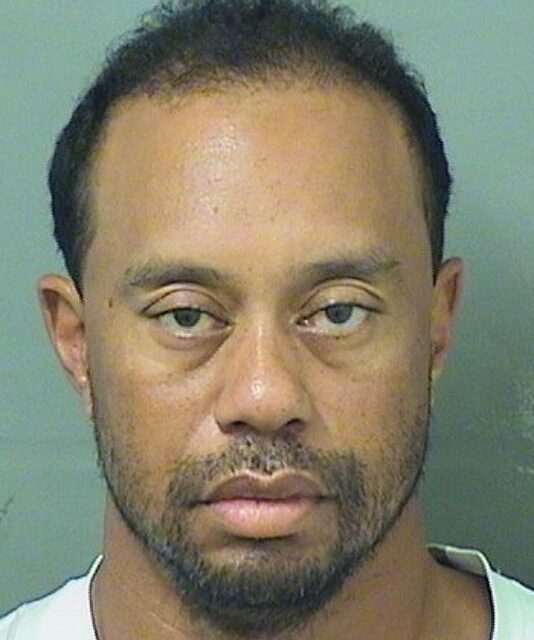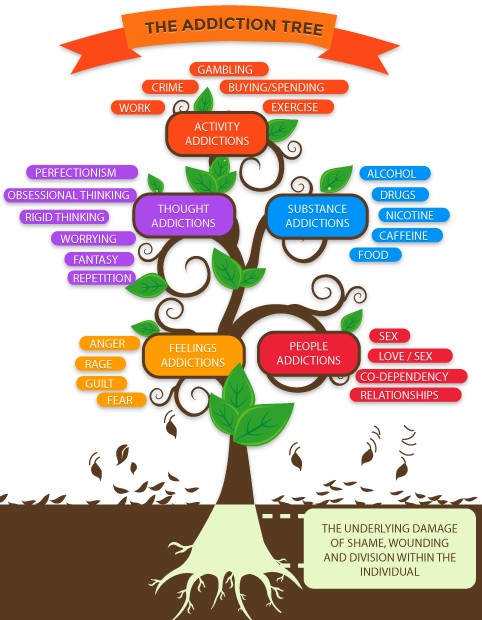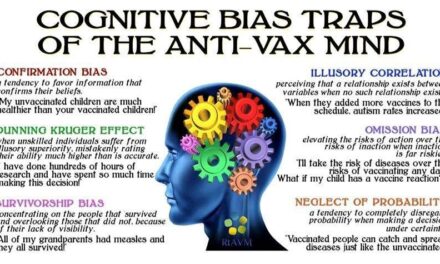“Tiger Woods Arrested for DUI in Florida”.
On May 29, 2017, this headline scrolled across my MSN feed.
You may have seen it as well. And if you didn’t see it on MSN, then maybe it was CNN, USA Today, ABC News or ESPN.
And by now, you have probably seen one or more headlines like it. And they are likely to be accompanied by a close-up head shot of a very disheveled and bleary-eyed looking Tiger. There’s a good chance that this photograph may have been his actual mug shot.
This episode in Tiger’s life is sadly reminiscent of a similar incident in 2009, when he was the sole motorist in a car accident near his home. At that time, he pulled out of his driveway, ran into a row of hedges, rode over a curb, and went on to strike a hydrant and then a neighbor’s oak tree. The accident was such that his former wife, Elin Nordegren, upon hearing the crash, ran out to see what had happened. She saw that Woods was unresponsive and broke out a rear window of his SUV in order to pull him out.
Descriptions of the incident indicate that when authorities arrived, he was laying on the ground, with lacerations to his upper and lower lips. Mr. Woods was also drifting in and out of consciousness, with his then wife trying to revive him.
Just as in 2009, his recent misadventure occurred late at night, during a long holiday weekend, and involved the use of Vicodin prior to the accident. By his own admission, in 2009, prior to driving, he had also taken Ambien.
In both instances, when authorities arrived, Woods was found to be asleep, initially unresponsive and devoid of any memory of what had just occurred.
And this should makes us wonder about whether or not Tiger has a problem with drugs.
“But how could that be?” you might wonder.
“How could this be for an individual who is so highly skilled and capable of exhibiting such discipline and mental grit? How could he make the same mistake of driving after taking powerful narcotics? After all, he has accomplished so much and has so much to lose.”
“Certainly, he knows better than to abuse drugs. He can’t possibly be an addict.”
While you’re pondering all of that, I would like to summon the names of a handful of other famous and highly talented individuals who have experienced recurrent run-ins with the law, close calls and various and sundry other unpleasant incidents, related to drug or alcohol abuse.
These include, but are not limited to: Johnny Manziel, Jamie Foxx, Stevie Nicks, Michael Phelps, Andre Agassi, Steven King, Ben Affleck, Johnny Depp, Mel Gibson, Mickey Mantle, Steven Tyler, Eminem, Anthony Hopkins, Alec Baldwin, Elton John, Nick Nolte, Samuel Jackson, Allen Iverson, Melanie Griffith, Ray Charles.
And we should never forget those who didn’t make it: Robin Williams, Prince Rogers Nelson, Philip Seymour Hoffman, Amy Winehouse, Whitney Houston, Michael Jackson, Heath Ledger, Chris Farley, Kurt Cobain, River Phoenix, Truman Capote, John Belushi, Elvis Presley, Jimi Hendrix, Janis Joplin, Billie Holiday, Sigmund Freud, Chris Cornell.
Other than Robin Williams, of the talented and highly gifted individuals mentioned above, who are no longer with us, all succumbed to consequences and outcomes of active addiction.
Every now and again, America awakens to news of inappropriate, illegal or simply self-destructive behavior by these larger-than-life figures. These stories almost always make the headlines. The press knows that the American public finds these episodes intriguing, and that the stories appeal to the more salacious side of its readers and viewers.
As we probably did with the Woods’ incidents, we’ll sit back in relative disbelief and think,
“What was he thinking?”
“Why on earth would she do that?”
“Why would he jeopardize his career, with all that he’s accomplished?”
“Tsk, tsk, tsk. So much to lose.”
And the assumption is often that the subject of the story has had a reckless disregard for his or her career, and that this disregard is simply a matter of immaturity or lack of character. And perhaps it is this deficiency of moral turpitude that has led to their troubles.
Well. Sometimes, that just may be the case. But we ought to look beyond the seemingly obvious.
Some of us are willing to entertain the idea that the celebrity in question may have “a problem” with alcohol or drugs; but then, it’s back to the thinking that there is no way that this person could be an alcoholic or addict and be so successful… demonstrate such genius, such leadership and discipline, such self-control… yet become so out of control.
And then no one really ever stops to consider the irony of addiction.
In order to get the irony of it, it’s important to, first, know what it is.
An internet search will yield a variety of definitions.
Much like Merriam-Webster, most will define addiction as “… a strong and harmful need to have something (such as a drug) or do something (such as gamble)…”
The medical definition and criteria presented by the American Society of Addiction Medicine include this description:
“A particularly pathological aspect of the way that persons with addiction pursue substance use or external rewards is that preoccupation with, obsession with and/or pursuit of rewards (e.g., alcohol and other drug use) persist despite the accumulation of adverse consequences. These manifestations can occur compulsively or impulsively…” (ASAM)
The “Free Dictionary” describes compulsive behavior as a hallmark of addiction:
“Addiction is a persistent, compulsive dependence on a behavior or substance… Addiction has been extended… to include mood-altering behaviors or activities. Some researchers speak of two types of addictions: substance addictions (for example, alcoholism, drug abuse, and smoking); and process addictions (for example, gambling, spending, shopping, eating, and sexual activity). There is a growing recognition that many addicts, such as polydrug abusers, are addicted to more than one substance or process.”
“Psychology Today” ties together the obsessive thinking, compulsive behaviors and the power that they have over the addict’s day-to-day life.
“Addiction is a condition that results when a person ingests a substance (e.g., alcohol, cocaine, nicotine) or engages in an activity (e.g., gambling, sex, shopping) that can be pleasurable but the continuation of which becomes compulsive and interferes with ordinary responsibilities and concerns, such as work, relationships, or health. People who have developed an addiction may not be aware that their behavior is out of control and causing problems for themselves and others.”
Please note that each of these sources cites chemical substances as being among the potential objects of the addict’s obsession. There is a repeated mention of “behaviors” and “activities”, as well; with the implicit notion that certain actions can become addictions, in and of themselves.
The “Psychology Today” description can be applied to any variety of activities and behaviors, some of which may even be productive. Keep this in mind when you consider all of the contributions of those referenced earlier in this article.
This is where we can begin to fathom that there is little incongruity between genius and active addiction. This is where we can start to imagine that, at times, the two can and do co-exist.
How do we explain the dilemma?
The best way to answer that is to tell you that there is a fine, almost filamental, line between a constant and repetitive behavior, which is the result of an obsession and expressed as a compulsion, and that which is considered a passion. Consider the difference between these:
Drive versus compulsion;
Passion versus obsession;
Perfectionism versus ritualism.
The genius or master of a given discipline is exalted for his drive, his passion, his perfectionism. The addict lives in a state of unmanageability due to his compulsion, obsession and ritualism.
These constructs are two sides of the same coin. The behaviors and propensities are the same, with varying outcomes based upon the object of attention or abuse. Ultimately, however, given time and chronicity, each can lead to painful and destructive outcomes for the individual and those around them.
In American society, the term “OCD” is often casually thrown around. It is used as if it carries with it a badge of honor. You might hear a friend say,
“I’m so OCD about how I keep my pantry”, as if obsessions and compulsions are things to which one should aspire… as if obsessions cannot and do not often have injurious and lethal consequences.
Think of the archetypal example of the person who chronically washes their hands and who suffers with true Obsessive Compulsive Disorder. Consider the description of their hands that have been scrubbed raw, and that are tender and painful; yet the individual very willingly continues to engage in dozens of episodes of hand washing each day… scrubbing through the pain, never even allowing scabs to form or healing to occur.
Despite the physical pain and obvious visual manifestation of this self-destructive disease, they return, day after day, and on multiple occasions, to the same sink, with the same scalding water and the stinging soap.
When is a person “using” and abusing anything?
“Use” and/or abuse occur when the ability to exercise consequential thinking about a particular thing is lost.
Drugs and alcohol are easy to fit into this equation. It makes sense.
An alcoholic drinks. Bad things happen. He or she continues to drink. More bad things occur. More drinking follows. They appear to have no consideration or care for the consequences that have already been proven and established.
As in Woods’ case, if one happens to ignore the fact that he or she has previously had a motor-vehicle accident while under the influence of drugs, and drives under the influence, yet again, the ability to think and reason, with consequence in mind, is gone.
Let’s look at a more innocuous appearing example… one that may not come to mind when we consider addiction.
For the person who is the classic workaholic, and has missed countless family dinners, recitals, birthdays and celebrations; and is aware that his absence has caused great pain, embarrass- ment and consternation for his spouse and children. He may promise to attend the next piano recital and be completely sincere in making the promise. But work prevails and he stays to try to finish up that one last agenda item, and misses the recital.
Harm has been done. Promises have been broken; trust undermined; and intimacy eroded. And, depending upon the chronicity of the offense, great harm has and is being done. But the notion of this consequence appears to have escaped the perpetrator. What has mattered most was doing what was comfortable and familiar in the moment, and what has brought personal gratification and reward, with little regard to collateral damage. So the behavior continues and the cycle ensues.
This is the pattern that addictive behaviors follow. Even wholesome and wonderful things can be exploited, perverted and distorted by the person with an addictive mind and proclivities.
For most people who do not suffer or struggle with addictive personalities, after engaging in a behavior that carried with it serious and/or painful consequences for them or those that they love, they typically do not elect to participate in the same behavior again. They have connected the behavior to the outcome, and can now make more productive decisions.
This is not so for those who suffer from obsessive thinking, compulsive actions and/or addictions.
Obsessions and compulsions can masquerade as dedication and commitment to a productive cause. This is the very insidious nature of the disease. It allows denial to flourish and chaos to result.
We compliment the student who buries his head in the books, takes only honors and AP coursework, and delivers a 4.5 weighted GPA. We praise the athlete who practices 3 hours a day, before and after school, on weekends, holidays and vacations. We extol his decisions to miss parties, gatherings and social events because he has a goal to attain, that brass ring to grab. We celebrate the passion and miss the obsession.
And what we fail to understand is that many individuals who are geniuses, warriors, “la creme de la creme”, the best-of-the-best, have achieved that through a laser sharp focus that has encompassed obsessive thinking and compulsive behavior.
And we celebrate it… because it works… Until it doesn’t.
The mental and emotional isolation and the abandonment of other vital aspects of psychological and spiritual development, that typify the addict and alcoholic, often are not apparent in teens and young adults. For younger individuals with highly competitive spirits, the stresses of real everyday life has not yet been visited upon them. Typically, they have neither bills to pay, a spouse with whom they must share life, nor children to raise. Without those common concerns to challenge them, emotional immaturity and spiritual deficiencies may be difficult to detect.
They have the luxury of putting their nose to the grind, dedicating hours upon hours to honing their craft, and nurturing a full-on obsession.
The behavior in and of itself is reinforcing, as is the secondary gain of recognition, admiration and material compensation. As a result, these learned behaviors that have worked to accomplish many of their goals, are carried with them into adulthood, and into relationships. Because these practices have brought them overwhelming success, there appears to be no reason not to continue using them.
Due to the fact that there are so many outward signs of success, no one notices that the patterns of behavior may be unhealthy. No one instructs these very talented ones to approach life with a different perspective or approach. No one says, “The manner in which you are doing this could be destructive to you and those that you love. Let’s try something different. Let’s incorporate balance.”
So just as the addict or alcoholic finds moderation to be an elusive construct, the obsessive and compulsive individual has difficulty achieving balance. Both will use something to the point of their own personal destruction and beyond.
When we look at the icons and geniuses who have made indelible marks on the world, and we appreciate the beauty that they have brought to our lives through their music, their writing, their athletic feats, their creativity, and we see that many have suffered the self-destruction of an active addiction, it should all make sense to us.
For so many of the best and brightest, the charge for their unwavering dedication to a dream was a personality that could be addicted to many things. The price of their success became the cost of their soul.












Excellent article. Eloquent and informative.